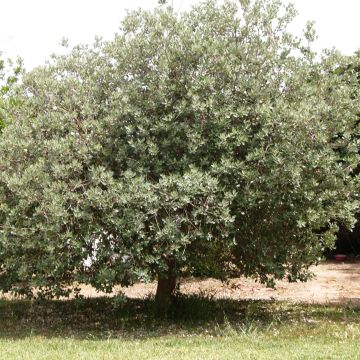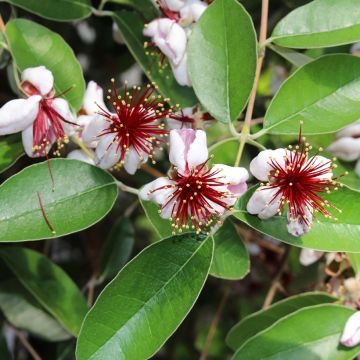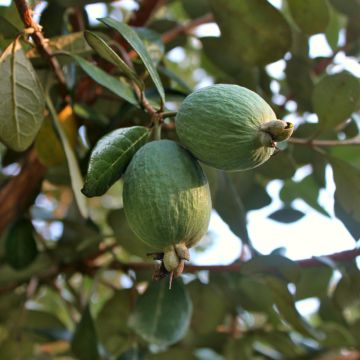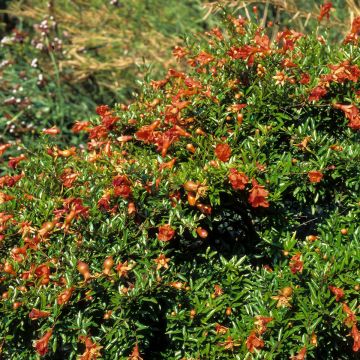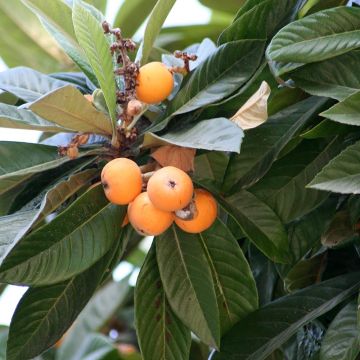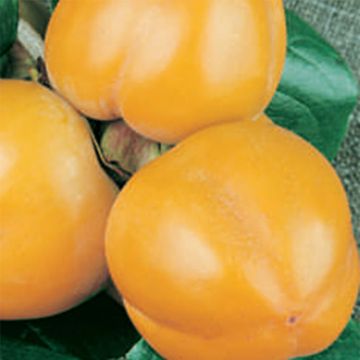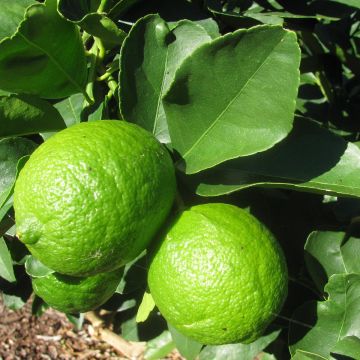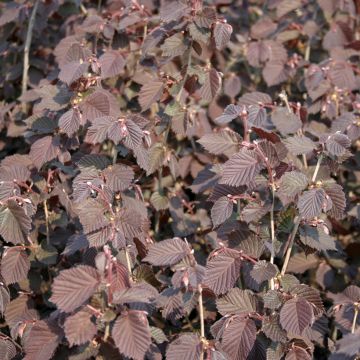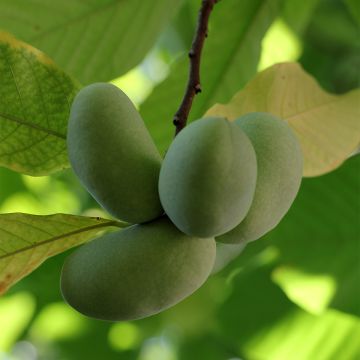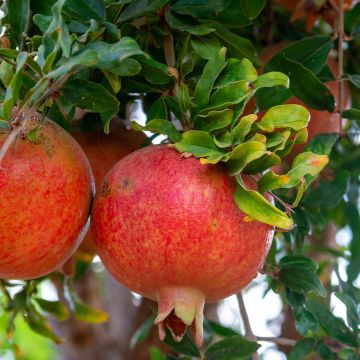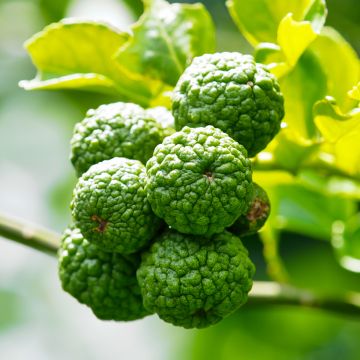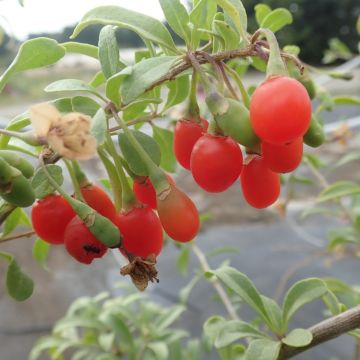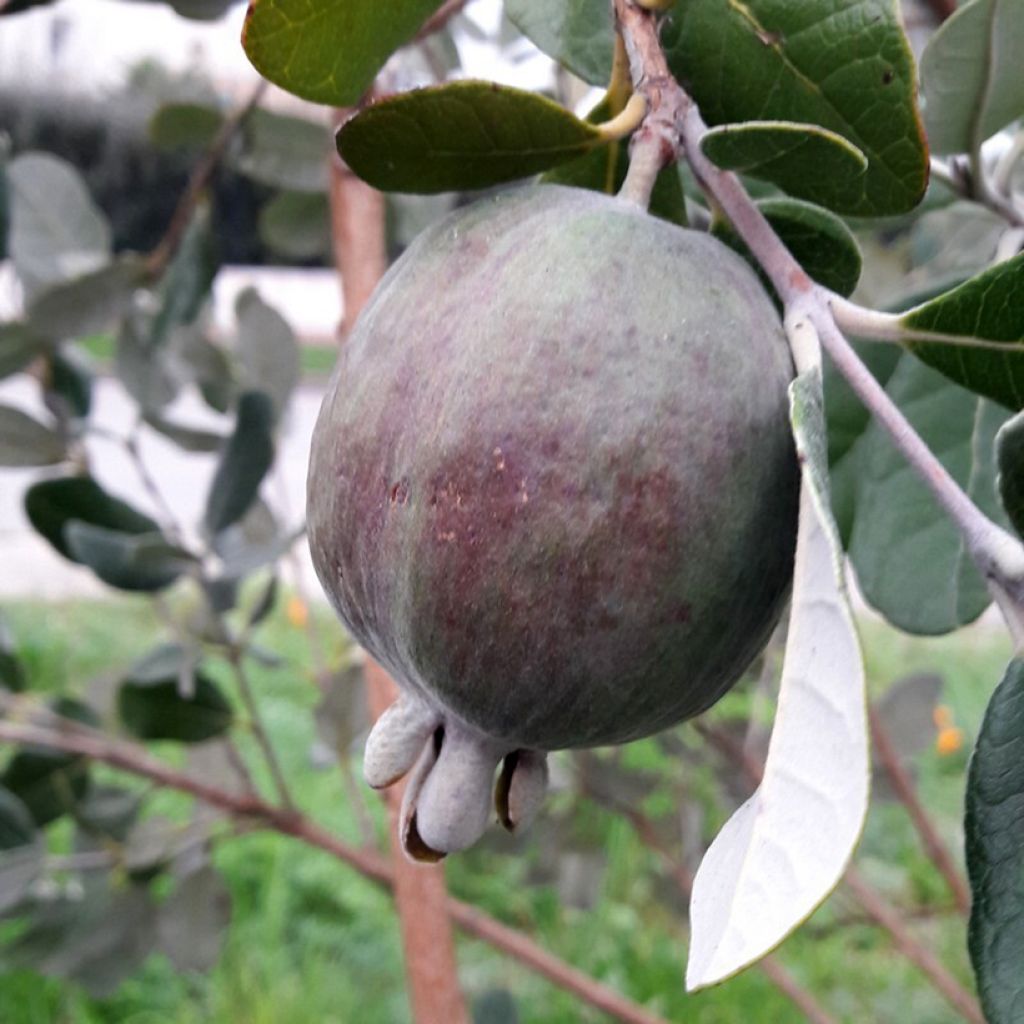

Feijoa sellowiana Apollo - Brazilian Guava
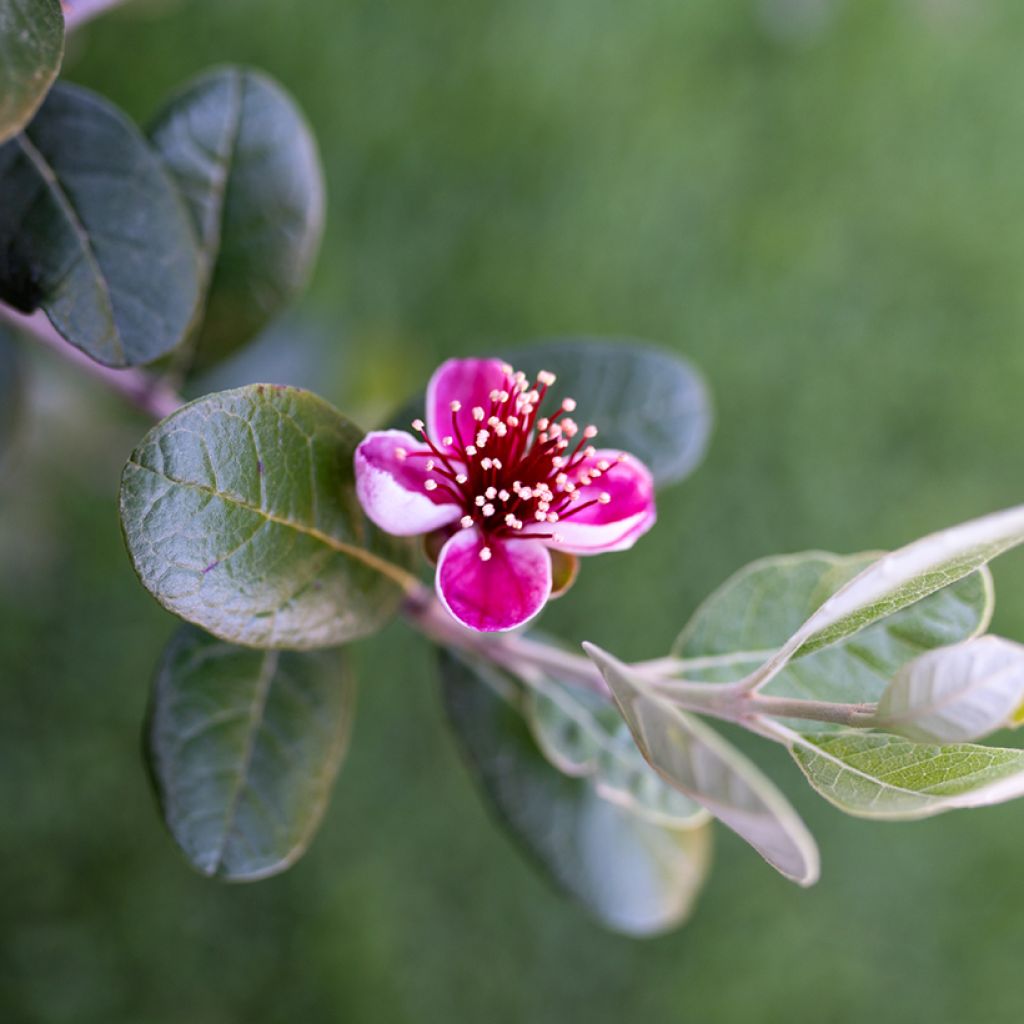

Feijoa sellowiana Apollo - Brazilian Guava
Feijoa sellowiana Apollo - Brazilian Guava
Feijoa sellowiana Apollo
Pineapple guava, Guavasteen, Feijoa
Why not try an alternative variety in stock?
View all →This plant carries a 6 months recovery warranty
More information
We guarantee the quality of our plants for a full growing cycle, and will replace at our expense any plant that fails to recover under normal climatic and planting conditions.
From €5.90 for pickup delivery and €6.90 for home delivery
Express home delivery from €8.90.
Description
The Brazilian Guava or Acca sellowiana Apollo is a small fruit tree that has many advantages. In regions with mild climates, it is easy to integrate it into Mediterranean-style gardens or in a garden with other fruit trees, or in a garden with an exotic or tropical style. In colder regions, it retains all its interests in sheltered exposure or when grown in pots. After a flowering composed of superb flowers with partially edible petals, this variety produces low-calorie fruits, creamy, with amazing flavors. It is appreciated as soon as it is harvested, in the making of delicious desserts or cooked in jams, compotes, jellies, pastries, etc. From mid-October, it produces a large fruit, 6 to 7 centimetres (2 to 3 inches) long, weighing 60 to 80 grams, oval-shaped, elongated. The skin is smooth, thick, firm and grainy, pruinose, dark green, becoming light green when ripe. The creamy white flesh is firm, juicy and sweet, deliciously flavored with pineapple, strawberry and guava, containing 20 to 40 small brown seeds. Not very sensitive to diseases and pests, the Feijoa adapts well to hot and dry conditions, it is easy to grow and requires little maintenance.
The Brazilian Guava, sometimes called Montevideo Guava, Pineapple Guava or False Guava, in Latin Acca or Feijoa sellowiana, belongs to the Myrtaceae family, like Eucalyptus, Callistemon, Myrtus, ... A family of trees and shrubs, widespread in tropical and subtropical regions of Australia, South America and Asia. The Feijoa is native to South America (Uruguay, Brazil, Argentina, Paraguay) and the name 'Feijoa' was given in 1859 by Otto Karl Berg (1815-1866), a German botanist, in homage to the Portuguese botanist João Da Silva Feijó (1760-1824) born in Brazil. It was introduced to France by Edouard André in the 1890s.
The Apollo variety forms a bushy, compact and rounded bush, reaching, at adulthood (around 7 to 10 years), approximately 3 metres (10 feet) in height, with a diameter of about 2 metres (7 feet). Its growth, quite slow in the first years, allows it to establish itself well. It is recognisable by its numerous branches, with brown bark that flakes off as it ages. Its evergreen foliage is composed of tough, elliptical, opposite leaves, 3 to 6 cm (1 to 2in) long and 2 to 4 cm (1 to 2in) wide, with prominent veins, olive green, with a velvety, silver-grey underside. Despite its origins, the bush itself is relatively hardy, down to -15°C, regrowing from the stump when completely frozen. In mild climates, it flowers on the young shoots, in May-June. The flowers, solitary, 3 to 5 cm (1 to 2in) in diameter, bloom in a wide corolla with 4 waxy petals, white on the reverse and pinkish-red on the inside. In the centre of the flower, numerous bright red stamens gather, with yellow tips (anthers) that carry the pollen. The petals, with a sweet and slightly sugary flavour, with a hint of cinnamon, have the particularity of being edible. They can be added to salads or used to decorate dishes. It is a remarkably decorative and late flowering that is not afraid of spring frosts.
The Apollo variety is only partially self-sterile or self-incompatible, the flowers cannot fully fertilize themselves. That is why the presence of other Feijoa varieties, nearby, whose flowering occurs at the same time, is necessary. For example, the varieties Mammouth, Coolidge, Gemini, Triumph or the Feijoa sellowiana type, are suitable for cross-pollination, thus increasing the number of fruits. It can produce from 10 to 20 kg of fruit per year. Although it can be grown in multiple regions of France, this bush, which prefers mild climates, may have difficulty flowering and producing fruit in a too cold climate.
The fruits of the Apollo feijoa ripen from mid-October. Being quite soft, it is best to hand-pick them before they fall from the tree. They can be consumed as soon as they are harvested. Their shelf life is relatively short, about 10 days in the bottom of the refrigerator or 3 to 4 days at room temperature. They are excellent to eat when the flesh becomes slightly soft. Low in calories, feijoa is rich in minerals (calcium, phosphorus and potassium) and particularly rich in vitamin C, making it a good antioxidant. When eaten raw, it can be enjoyed with a spoon after being cut in half. In cooking, it can be incorporated into salads with other fruits, used to make sorbets, smoothies or chutneys. Cooked, feijoas are used to make jams, compotes, jellies or pies. They can also accompany fish or seafood.
Easy to grow and not demanding, the Brazilian Guava prefers a sunny exposure sheltered from cold winds, a rich, fertile and well-draining soil. Adapting well to coastal conditions, it is a bush that appreciates the mildness, capable of withstanding sea spray and salt. In this type of garden, with a Mediterranean style, it can be freely integrated with agaves, opuntia, helichrysum, santolina, etc. or composed as a free hedge or in a bed, in association with griseline, oleander, eleagnus, callistemon, grevillea, etc. With its exotic and original fruits, the feijoa finds its place in a fruit garden alongside fig trees, sea buckthorn, kiwis, nashis (Pyrus pyrifolia), kaki (Diospyros kaki) or in pots next to citrus trees. For a more exotic or tropical atmosphere, the Brazilian Guava blends nicely with banana trees, palm trees and yuccas. For regions with colder climates, the feijoa will behave very well when grown in pots to enhance terraces, balconies or patios.
Report an error about the product description
Feijoa sellowiana Apollo - Brazilian Guava in pictures
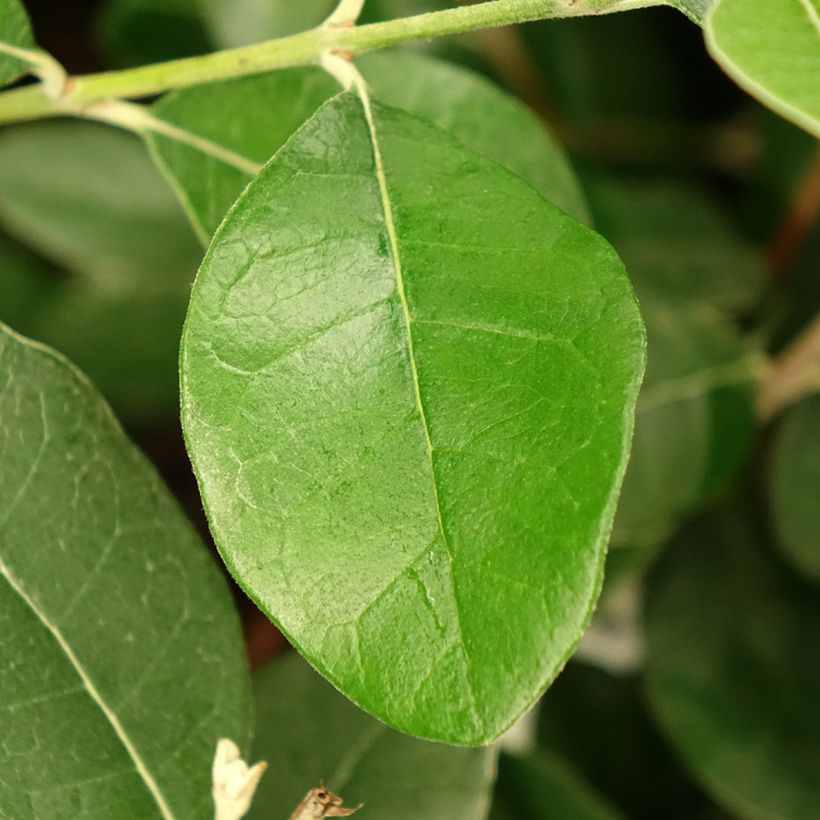

Plant habit
Fruit
Flowering
Foliage
Botanical data
Feijoa
sellowiana
Apollo
Myrtaceae
Pineapple guava, Guavasteen, Feijoa
Cultivar or hybrid
Other Feijoa trees - Acca
Planting and care
The Brazilian Guava adapts to all types of soils, tolerates limestone, but prefers neutral or slightly acidic soils. It appreciates well-drained, fertile, light, and deep soils, and requires regular organic amendment and regular watering, especially during hot and dry summers. The feijoa can withstand sea spray and can be planted by the seaside.
Choose a sheltered and sunny location, as its main branches are brittle. For better fruiting, it is recommended to plant at least two plants, spacing them 1.20 m (4ft) to 1.60 m (5ft) apart. Planting should be done in spring or autumn, avoiding the frost period.
Prepare the soil by removing rocks and unwanted weeds. Dig a planting hole two or three times the size of the root ball. Set aside the subsoil and topsoil separately. Mix bonemeal or well-rotted compost or potting soil with the subsoil and pour this mixture into the bottom of the planting hole. Take your Feijoa out of its pot, gently loosen the root ball to stimulate root growth. Place the root ball, cover with the topsoil, and firm it down. Water thoroughly (approximately 10 L).
You can plant it in a large pot or container so that you can easily bring it indoors during winter. Use a well-draining and nutrient-rich substrate, such as potting soil mixed with some well-decomposed compost and coarse sand. Place the pot in full sun, preferably sheltered from the wind.
Water regularly, especially during the first few years after planting and during hot weather. Mulch the soil to reduce watering needs and the growth of weeds.
The feijoa is not very susceptible to diseases and pests. However, it can be affected by scale insects. You can get rid of them by using diluted black soap. In areas where it is prevalent, the Mediterranean fruit fly (Ceratitis capitata) can be a problem for harvesting.
Planting period
Intended location
Care
This item has not been reviewed yet - be the first to leave a review about it.
Unusual and exotic fruit trees
Haven't found what you were looking for?
Hardiness is the lowest winter temperature a plant can endure without suffering serious damage or even dying. However, hardiness is affected by location (a sheltered area, such as a patio), protection (winter cover) and soil type (hardiness is improved by well-drained soil).

Photo Sharing Terms & Conditions
In order to encourage gardeners to interact and share their experiences, Promesse de fleurs offers various media enabling content to be uploaded onto its Site - in particular via the ‘Photo sharing’ module.
The User agrees to refrain from:
- Posting any content that is illegal, prejudicial, insulting, racist, inciteful to hatred, revisionist, contrary to public decency, that infringes on privacy or on the privacy rights of third parties, in particular the publicity rights of persons and goods, intellectual property rights, or the right to privacy.
- Submitting content on behalf of a third party;
- Impersonate the identity of a third party and/or publish any personal information about a third party;
In general, the User undertakes to refrain from any unethical behaviour.
All Content (in particular text, comments, files, images, photos, videos, creative works, etc.), which may be subject to property or intellectual property rights, image or other private rights, shall remain the property of the User, subject to the limited rights granted by the terms of the licence granted by Promesse de fleurs as stated below. Users are at liberty to publish or not to publish such Content on the Site, notably via the ‘Photo Sharing’ facility, and accept that this Content shall be made public and freely accessible, notably on the Internet.
Users further acknowledge, undertake to have ,and guarantee that they hold all necessary rights and permissions to publish such material on the Site, in particular with regard to the legislation in force pertaining to any privacy, property, intellectual property, image, or contractual rights, or rights of any other nature. By publishing such Content on the Site, Users acknowledge accepting full liability as publishers of the Content within the meaning of the law, and grant Promesse de fleurs, free of charge, an inclusive, worldwide licence for the said Content for the entire duration of its publication, including all reproduction, representation, up/downloading, displaying, performing, transmission, and storage rights.
Users also grant permission for their name to be linked to the Content and accept that this link may not always be made available.
By engaging in posting material, Users consent to their Content becoming automatically accessible on the Internet, in particular on other sites and/or blogs and/or web pages of the Promesse de fleurs site, including in particular social pages and the Promesse de fleurs catalogue.
Users may secure the removal of entrusted content free of charge by issuing a simple request via our contact form.
The flowering period indicated on our website applies to countries and regions located in USDA zone 8 (France, the United Kingdom, Ireland, the Netherlands, etc.)
It will vary according to where you live:
- In zones 9 to 10 (Italy, Spain, Greece, etc.), flowering will occur about 2 to 4 weeks earlier.
- In zones 6 to 7 (Germany, Poland, Slovenia, and lower mountainous regions), flowering will be delayed by 2 to 3 weeks.
- In zone 5 (Central Europe, Scandinavia), blooming will be delayed by 3 to 5 weeks.
In temperate climates, pruning of spring-flowering shrubs (forsythia, spireas, etc.) should be done just after flowering.
Pruning of summer-flowering shrubs (Indian Lilac, Perovskia, etc.) can be done in winter or spring.
In cold regions as well as with frost-sensitive plants, avoid pruning too early when severe frosts may still occur.
The planting period indicated on our website applies to countries and regions located in USDA zone 8 (France, United Kingdom, Ireland, Netherlands).
It will vary according to where you live:
- In Mediterranean zones (Marseille, Madrid, Milan, etc.), autumn and winter are the best planting periods.
- In continental zones (Strasbourg, Munich, Vienna, etc.), delay planting by 2 to 3 weeks in spring and bring it forward by 2 to 4 weeks in autumn.
- In mountainous regions (the Alps, Pyrenees, Carpathians, etc.), it is best to plant in late spring (May-June) or late summer (August-September).
The harvesting period indicated on our website applies to countries and regions in USDA zone 8 (France, England, Ireland, the Netherlands).
In colder areas (Scandinavia, Poland, Austria...) fruit and vegetable harvests are likely to be delayed by 3-4 weeks.
In warmer areas (Italy, Spain, Greece, etc.), harvesting will probably take place earlier, depending on weather conditions.
The sowing periods indicated on our website apply to countries and regions within USDA Zone 8 (France, UK, Ireland, Netherlands).
In colder areas (Scandinavia, Poland, Austria...), delay any outdoor sowing by 3-4 weeks, or sow under glass.
In warmer climes (Italy, Spain, Greece, etc.), bring outdoor sowing forward by a few weeks.

































